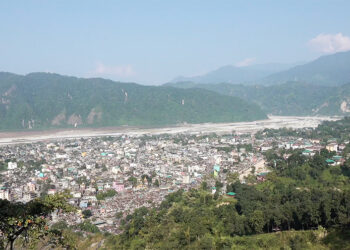
Although the Gewog Tiger Conservation Tshogpa has disbursed nearly Nu 500,000 in compensation since its establishment in July 2022, some gewogs are facing low participation rates due to reluctance among some herders in paying the premium amount. Some also say the fund will not be enough in case of widespread livestock attacks. The compensation scheme is for minimising the financial losses incurred by local communities when cattle are killed by tigers.
Currently, there are 11 gewogs registered with the scheme in Trongsa, Bumthang, Zhemgang, Wangdue Phodrang, Punakha and Gasa.
Each gewog receives a seed money of Nu 1 M and members are required to contribute a minimal annual premium to insure their cattle through the scheme.
According to the Department of Forests and Park Services, there are 576 active members currently with 1,249 insured cattle.
However, some gewogs have yet to see maximum participation from their residents.
“We were given the seed money of Nu 1 M and chiwog tshogpas have actively tried to register the farmers in the scheme. It has benefitted the people. However, not many people seem interested and I think it is because similar compensation scheme in the past failed to address the issue. We have 30 households registered with the scheme currently. The fund may be sufficient for now but if depredation happens on a wide scale, the fund may not be sufficient,” said Phub Dorji, the Dangchhu Gup in Wangdue Phodrang.
“People are hesitant to join the scheme as it is fairly new and they generally think any sort of compensation from such schemes are not easily released. Additionally, members are required to pay Nu 300 per cattle as premium. Despite these challenges, two new members have joined the scheme this year, and we hope that for more individuals will come forward in the future,” said Kuenzang Lhamo, Chhungphel Tshogpa of Chhumey Gewog in Bumthang.
The Bhutan Tiger Center said as the funding of the project is donor-dependent, it is difficult to increase the amount. The centre also said joining the scheme is a personal choice and it cannot do much in increasing the number of members.
“The Gewog Tiger Conservation Tshogpa was started with a Nu 1 M seed capital in the member gewogs. As this precedent has been set, we have to maintain uniformity in all other gewogs. That’s we cannot increase the fund size. And regarding the number of members, it is entirely dependent on the farmers themselves because we do not select the members, instead it is done through a consultation process. So if people interested, they can come forward and become a member,” said Tashi Dhendup, Head of the Bhutan Tiger Center.
The Gewog Tiger Conservation Tshogpa secures funding through project proposals and partnership with donor agencies like World Wildlife Fund, Bhutan Foundation, UNDP and IUCN.
“There is no formal compensation that is being implemented across all gewogs at the moment. WWF is supporting this Gewog Tiger Conservation Tshogpa in getting it implemented right now in Dragteng in Trongsa and soon we will also be working with the department to establish it in Trong and Bardo Gewogs of Zhemgang. Besides compensation mechanism, we are working with the department to implement more holistic human-wildlife conflict management interventions on the ground,” said Kezang Yangden, Conservation Director of the WWF Bhutan.
Despite the challenges, the scheme has benefitted the people who have joined it. The compensation scheme varies from one gewog to another.
“In the past, without such a scheme, even if people made claims about wildlife depredation, people hardly got any compensation. However, with this new scheme, we are provided compensation of Nu 4,000 when we lose a cattle to tiger attacks,” said Tshering Norbu, Kikhar Tshogpa of Nangkor Gewog in Zhemgang.
“In Drakteng Gewog, there are 53 members with 134 cattle already insured. The programme has proven beneficial as members receive compensation for livestock attacks based on the premium they pay. So far, five cases have been compensated,” said Dawa Tshering, Livestock Officer of Dragteng Gewog in Trongsa.
According to the Bhutan Tiger Center, more than 470 livestock were either killed or injured by large carnivores within two years as of 2021. More recently, Gewog Tiger Conservation Tshogpas reported 150 livestock depredation cases from July 2022 to February 2024.
The Department of Forests and Park Services is currently looking at redesigning human-wildlife conflict insurance schemes in collaboration with the UNDP’s Biodiversity Finance Initiative or BIOFIN project.
Tshering Wangmo & Tshering Yuden (Interns)
Edited by Kipchu





